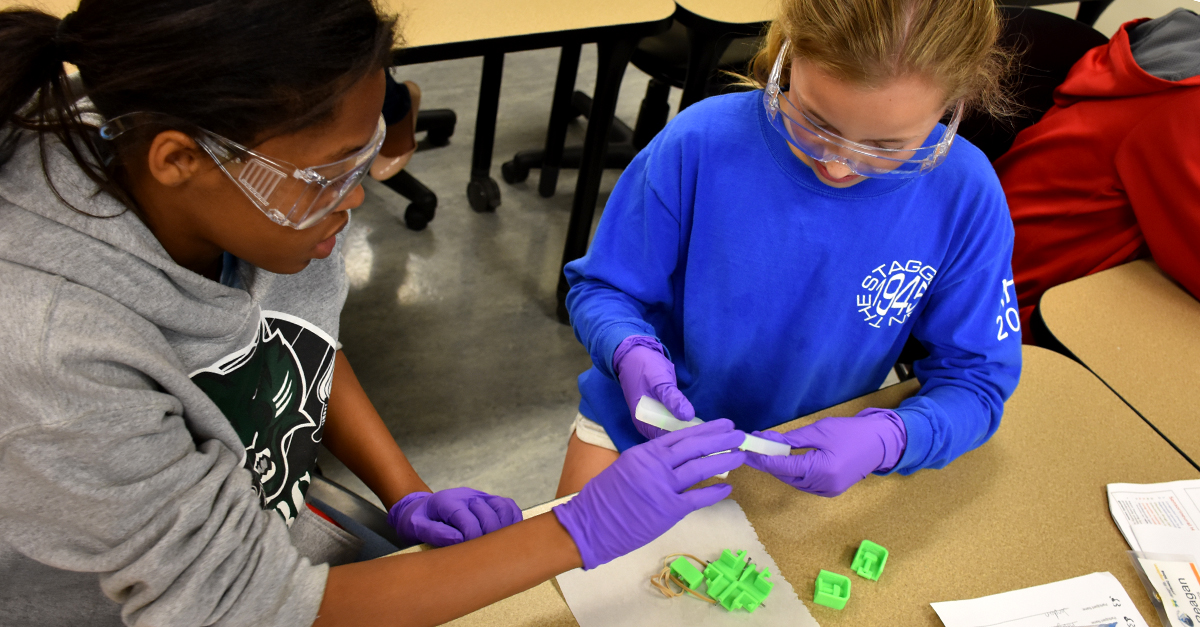
A Purdue Polytechnic Institute professor’s research on soft robotics could identify a new way to entice more women to consider STEM-related careers.
Nathan Mentzer, principal investigator for the National Science Foundation-funded “Soft Robotics to Broaden the STEM Pipeline” grant, believes soft robotics will prove to expand curiosity even further.
When talking about robotics, you can discuss two types: rigid and soft. Rigid robotics are put into action, also known as actuated, by motors or gears with rigid structures. Soft robotics are actuated by air pressure and are stretchy and flexible (what Mentzer calls “elastically deformable”).
“Some ninth grade students have had a deep, rich experiences with rigid mechanical robotics; they may be more advanced than their classmates,” he said. “Soft robotics levels the playing field because all students are able to create and assemble molds and mix and pour silicone materials. So all students will be able to participate, regardless of background, whether they have been tinkering with traditional mechanical systems or not.”
Mentzer, associate professor engineering/technology teacher education, says the idea for the research project was inspired by the engineering fields that tend to attract more women: materials science and bio-inspired design. His soft robotics project incorporates pieces from both areas.
To make the idea of soft robotics in a high school classroom more attractive, Mentzer and his team made it more interactive by including design-thinking and science inquiry as part of a lesson plan. They also made it simpler and less expensive to create molds and materials so it could be accessible to more schools and their students.
They tested their lessons and robotics with high school students in Maryland in Fall 2016. Maryland is one of only a few states that requires the appropriate class, Foundations of Technology, for all ninth grade students.
“We get students who want to be there and those who don’t,” Mentzer said. “We get to ask, ‘does our project help this captive audience become more engaged?’ Our goal is to get all of the students excited.” He says teachers are reporting that their students are excited and engaged with the new lessons, but the research team will collect additional data before they are ready to compare it to lessons that use rigid robotics.
Barry Burke, director of the STEM center at ITEEA, is part of Mentzer’s research team. ITEEA creates curriculum for audiences around the world. The soft robotics curriculum has been built with ITEEA’s delivery methods in mind, so if it proves to be successful, it can be shared worldwide almost overnight.
“In two weeks, students can go through three to five iterations which allows them to think, design, prototype, observe, reflect and repeat,” Mentzer says. “That allows them to blend scientific inquiry with design and allows them to put it together. It is an integrative STEM experience.”
Rebecca Kramer, assistant professor of mechanical engineering at Purdue, is also part of the research team. They will continue testing and modifying their project through June 2018.
Learn more about the team’s work, including photos, on the ITEEA website.
